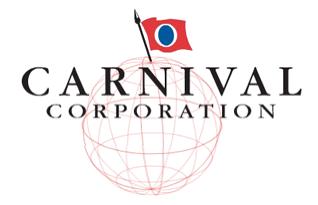
System Lock-In
Leverage existing resources with Princess Line acquisitions. With the acquisition of the Princess Lines, Carnival has an excellent opportunity to leverage entertainment and leisure services that can only be found with the Carnival Cruise Line complementary selection. Initially, an audit of all �unique� or �niche� attributes Carnival offers as a whole will be identified. Then, a financial analysis and customer need and desire assessment will be conducted to insure appropriate initiatives are identified for the short- and long-term.
Timeline: Immediately. Not more than 3 months.
Adaptive Process: Stop and evaluate what we have, where we want to go, and where it will be profitable to go! Short-term retrenchment.
Brand Management and identity analysis to meet current and future business goals. This initiative falls into place with the above noted. In that, we believe Carnival may run into brand management and identity confusion. Therefore, careful management and strategic alliances should be managed to complement and solidify the brand name. Carnival, to date, has done an excellent job in managing their identity and advertising their product line and leisure services to specific markets. We believe the future will need to focus on the varied target market segments within the tourism industry. Strategic alliances with hotels, casinos, leisure tours, suppliers, tour agencies must be leveraged to secure continued brand identity.
Time Line: Continuously.
Adaptive Process: Adjust program to explore target customers and target system architecture and distribution channels.
Internal and External resource evaluation. Carnival will, every four to six months, evaluate the external environment. Close attention to financial and economic environmental conditions should be considered. In addition, during this analysis, time trends and changes in customer needs should be considered in the short and long-term strategic management process.
Time Line: Every four to six months.
Adaptive Process: Adjust program to explore target customers and target system architecture and distribution channels.
Operational and Management Evaluation. With the acquisition of many cruise lines, Carnival will audit existing operational and management practices. The best operational and management practices will be implemented throughout the organization to leverage cost savings and efficiencies. This strategy will also be leveraged with suppliers and complementary services to achieve a �niche� or �unique product/service position� and cost efficiencies.
Time Line: Ongoing.
Adaptive Process: Operational Effectiveness by focusing on best system performance.
External and Industry environmental planning. Obviously, Carnival cannot predict if the future will be good or bad. However, industry disasters such as economic downturns and fear of travel can be strategically addressed while implementing long-term goals. For example, with the acquisition of the Princess Lines and existing Carnival services, Carnival will develop a program for North America travel based on their existing services to Alaska, Mexico, the Caribbean and the New England destinations. These destinations tend to be safer than other global locations. A plan will be developed into the existing initiatives to insure these destinations are ready should fear of international travel arise or travel be curtailed due to a slow economy.
Time Line: Immediate and ongoing.
Adaptive Process: Target distribution channels and customer bundles.
Target Market development. Carnival must look at the Asia/Pacific region for new market interest. They are perfectly positioned from a price point to compete in these markets. The Asia/Pacific region is the fastest growing market in the world. This market is in the growth stage and should be considered for new product introductions and growth opportunities. In addition, South America poses a new market that may be more open to low cost vacation options. Carnival will continue to leverage at all price points. However, the future of Carnival rests with the new market segments of the Baby Boomers, Generation X, and the noveau riche of the Asia/Pacific region. The South American market continues to be ideal for the lower cost product/service lines.
Timeline: Ongoing/Continuous.
Adaptive Process: Target distribution channels and customer bundles. This program will also focus on customer sourced innovation. We recognize that our growth may impede our customer care; however, we will adapt and integrate best practices appropriately.
Niche Development. Critical to the success of Carnival is a new niche development. To fully achieve System Lock-In success, Carnival must look for ways to stand apart in the travel and leisure industry. We propose initiatives that are the �first�, the �only�, and difficult to reach by competitors because of their financial positions. We propose that Carnival look at the creation of unique experiences tailored for the customer. This will be achieved through the Princess Lines Personal Choice Cruising � Program. In addition, new programs that explore alternative travel and leisure experiences will be evaluated for future program implementation.
Timeline: IMMEDIATELY.
Adaptive Process: Focus on product innovation, customer sourced innovation and system innovation to lock-in our customer groups.
At Carnival, we believe the future is today and ongoing. The strategic management process is ongoing and an adaptive process. Our strategic management strategy is aligned with our adaptive processes to ensure smooth operational effectiveness, customer targeting and innovative sailing into the future.